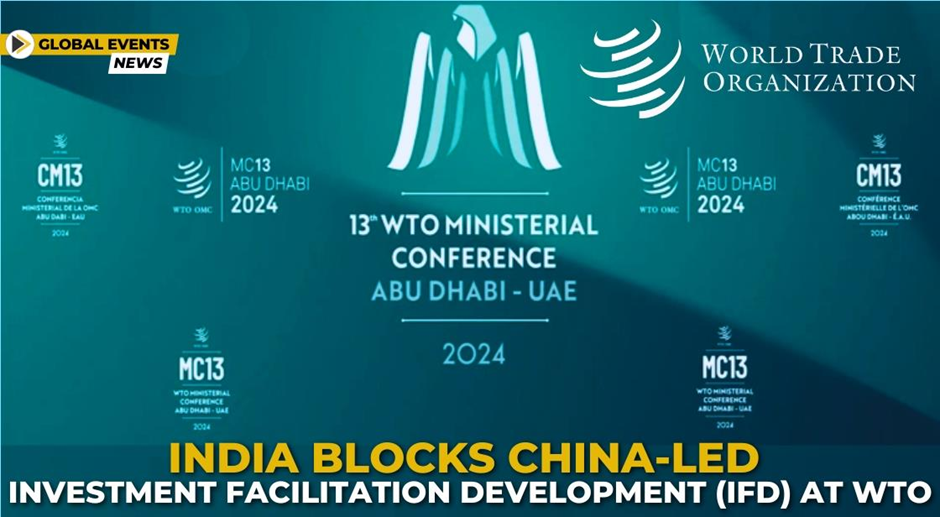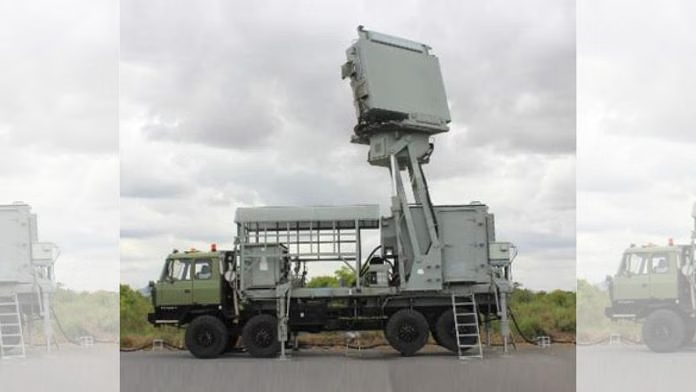- Courses
- ABOUT US
- OUR TOPPERS
- TEST SERIES
- FREE STUDY MATERIAL
- VIDEOS
- CONTACT US
India Opposes China-led WTO Pact and Supports Fisheries Subsidy Reform
India Opposes China-led WTO Pact and Supports Fisheries Subsidy Reform
12-12-2024

- The Investment Facilitation for Development (IFD) agreement, introduced by China in 2017, aims to improve the global investment environment and help countries attract foreign investment (FDI), especially in developing and poorer nations.
What is the Investment Facilitation for Development (IFD) Agreement?
|
However, on 10th December 2024, India, along with South Africa, Namibia, and Turkey, opposed the deal due to concerns that it will limit the policy choices of these countries.
- Support for the IFD: As of now, 128 out of 166 WTO members have supported the IFD, including countries with large sovereign wealth funds (funds owned by governments) and nations that depend on Chinese investments. Pakistan, which was not initially part of the agreement, has now joined. The United States has chosen to remain neutral, neither opposing nor supporting the agreement.
- India’s Concerns: India argues that the countries supporting the IFD might be mistaken in thinking the agreement will help them. India believes the IFD will restrict the ability of countries to make their own decisions about foreign investment, especially for developing nations. India feels that these nations should have the freedom to create their own investment policies without being bound by global rules under the IFD.
- Global Investment Shifts: The agreement comes at a time when investment flows are moving away from China due to concerns about a US-China trade war and slower economic growth in China. As a result, many companies are shifting their investments to ASEAN countries and other emerging markets. India sees the IFD as an external pressure on countries to accept terms that could benefit China and large economies while limiting the choices of smaller nations.
- India’s Stand: India has made it clear that, even though more countries may support the IFD, it will continue to oppose the agreement in future WTO discussions, as it believes the deal would limit the freedom of developing nations to control their own investment policies.
India Pushes for Fair Fisheries Subsidy Rules at WTO
- Issue: India is also urging the WTO to adopt a fairer approach to fisheries subsidies. India wants the per capita distribution of subsidies as a more accurate way to address overfishing and overcapacity in global fisheries.
- India's Subsidy Situation: India provides $35 per fisher in subsidies, much lower than some European countries, where subsidies can reach $76,000 per fisher. India argues that this difference shows the inequality in the current global subsidy system, which does not fairly reflect the needs of developing nations.
- WTO’s Fisheries Subsidy Discussions: The WTO is negotiating rules to control subsidies that contribute to overfishing and overcapacity in the fishing industry. In 2022, the WTO members agreed to curb subsidies for illegal, unreported, and unregulated (IUU) fishing. However, India believes that total subsidies are not the best measure, as they include subsistence subsidies that support the livelihoods of fishing communities but do not contribute to overfishing.
- India’s Proposal: India has proposed a document titled, "Designing Rules for Overcapacity and Overfishing: A Case for Per Capita Subsidies," which suggests that a per capita subsidy model would be a fairer and more balanced approach to global fisheries management. India believes that subsistence subsidies, which help local fishing communities survive, should not be included in the same category as subsidies that contribute to overfishing.
- Strategic Importance: India’s push for per capita subsidies shows its commitment to sustainable fishing while also protecting the livelihoods of fishing communities. The proposal is intended to create a fairer system for all countries, especially developing ones, in the global fishing industry.
Strategic Implications and Global Context:
- The IFD agreement, although supported by many countries, is seen as a China-led initiative that could increase China’s influence over global investment decisions. India’s opposition is based on concerns about national control and policy flexibility in deciding how to manage foreign investments.
- With investment shifting away from China, India aims to attract more foreign investment by maintaining control over its investment policies, instead of accepting outside pressure from agreements like the IFD.
- India’s position on both the IFD and fisheries subsidies highlights its role as a leader for developing countries within the WTO. India is pushing for fair trade rules that help developing nations rather than favoring richer countries.
- The call for per capita fisheries subsidies reflects India’s desire for a more equitable system in global trade that considers economic differences between developed and developing nations.
- China’s push for the IFD agreement is part of its larger goal to expand its economic influence globally. India’s opposition highlights its desire to protect its policy independence and economic sovereignty, ensuring that developing countries have the freedom to make their own decisions about foreign investment.
-
Fisheries Subsidies and Global Sustainability:
- India’s call for per capita subsidies also reflects its focus on sustainable development and fairness in global trade practices.
- The aim is to create a global system that helps both the environment and local communities.
- By focusing on subsistence subsidies, India wants to ensure that developing countries are not penalized for supporting their fishing communities.
Conclusion:
India’s opposition to the China-led IFD agreement and its push for fairer fisheries subsidies reflect its desire to protect sovereignty and policy flexibility for developing nations. By opposing the IFD, India seeks to ensure that developing countries can make their own decisions regarding foreign investments without external pressure. At the same time, India’s support for per capita fisheries subsidies aims to create a fairer and more sustainable global trade system.




